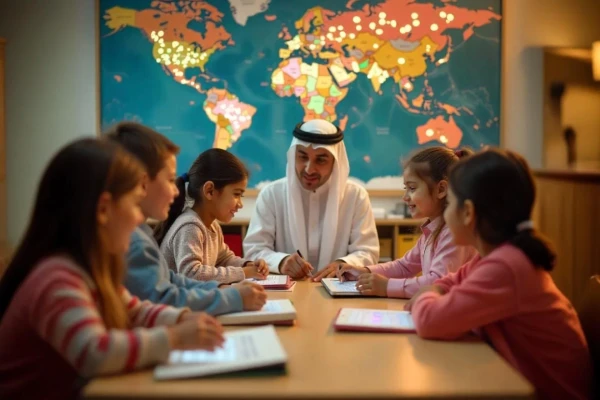Why Is Bilingual Education Important? Cognitive and Social Benefits for Today’s Children

In a world moving rapidly toward globalization and cultural openness, mastering just one language is no longer enough. A student who learns in two languages has a greater chance of understanding science more deeply, communicating with different cultures, and developing cognitive skills that make them more capable of problem-solving and academic excellence.
It’s not only about increasing academic and career opportunities but also about strengthening identity, building self-confidence, and opening new doors to creativity and innovation. In this article, we will explore the key benefits of bilingual education, the challenges it faces, and how to overcome them successfully. We will also look at how it can form a solid foundation for a brighter future, with real examples from schools that adopted this system.
Effective Preparing for the SAT requires more than memorizing formulas; it involves strategic practice, time management, and expert guidance to help students achieve top scores and secure admission to leading universities.
What Is Bilingual Education?
Bilingual education is an educational system based on using two main languages to teach academic subjects. This means that the student does not learn the second language as a separate subject only, but also studies sciences, mathematics, history, and other subjects in two languages simultaneously, with varying ratios depending on the program.
The goal of this method is to develop language skills naturally and progressively, so that the student becomes able to think and express themselves in two languages at once. Models of bilingual education vary between full immersion—where most subjects are taught in a second language—and partial immersion or dual-language programs that balance the mother tongue and the second language.
Learning How to Prepare for University is the first step toward a smooth academic transition, helping students build strong study habits, manage their time effectively, and adapt to the new social and financial responsibilities of college life.
What Are the Benefits of Bilingual Education?
There are numerous proven benefits of this educational approach, supported by recent scientific studies, including:
- Students who learn in two languages have stronger concentration and problem-solving skills, along with mental flexibility that helps them adapt quickly to new situations.
- The brain constantly practices switching between languages, which enhances memory, attention, and multitasking abilities.
- Bilingualism can delay age-related memory problems.
- Positive impact on critical thinking and creativity in everyday life.
- Bilingual students often outperform monolingual peers in reading, writing, mathematics, and science.
- Bilingual education does not only provide extra language skills but also directly improves academic performance.
- It enhances deeper understanding of concepts and gives students more flexibility in expressing ideas in different ways.
- Strengthens the grasp of the mother tongue and builds confidence in academic writing and communication.
- Opens wide doors to discovering and appreciating new cultures.
- Builds awareness of traditions, values, and customs of other societies, fostering tolerance and openness.
- Helps children from minority or immigrant communities preserve their mother tongue alongside the official language, reinforcing identity and belonging.
- Boosts self-confidence and the ability to interact positively in multicultural settings.
- Its impact extends beyond the student to benefit families and communities.
- Improves students’ ability to form diverse friendships and communicate with different social groups.
- Encourages a more collaborative and inclusive school environment where languages and identities are respected.
Making the right decision when Choosing International School in Saudi Arabia ensures that students receive high-quality education, benefit from global curricula, and grow in an environment that balances academic excellence with cultural values.
Challenges and How to Overcome Them
Despite its many advantages, bilingual education faces certain challenges, such as:
- Shortage of qualified teachers who can teach effectively in two languages.
- Difficulty in creating balanced curricula that integrate both languages without undermining either.
- Resistance from some families who fear that dividing instruction between two languages may affect their child’s mastery of the mother tongue.
To overcome these challenges, schools can invest in teacher training, develop flexible curricula tailored to local needs, and raise parental awareness about the long-term academic and professional benefits of bilingual education.
Exploring Success Stories from Al Forsan School Graduates showcases how students have gone on to achieve academic excellence, earn scholarships, and gain admission into top international universities, reflecting the school’s commitment to quality education.
Successful Models of Bilingual Education: Al Forsan School
There are several success stories proving the effectiveness of bilingual education academically and socially. For instance, Al Forsan School applied a bilingual program combining Arabic and English in core subjects. This helped students develop balanced language skills, strengthen critical thinking, and express themselves clearly in both languages.
In the United States, schools that adopted bilingual programs in English and Spanish showed better performance in standardized tests compared to non-bilingual schools.
In Europe, international schools have embraced dual-language models where students study all subjects in two main languages, which enhanced both cultural awareness and academic outcomes.
These examples, including the Al Forsan School model, highlight how bilingual education can be a powerful tool to prepare creative generations ready to thrive in multicultural environments.
Building a clear approach to Understanding NGSS Standards helps teachers and students connect science with real-world applications, strengthen inquiry-based learning, and develop the critical thinking skills needed for future academic and career success.
Is bilingual education suitable for all students?
Yes, most students can benefit, but adaptation speed depends on age and proficiency in their first language.
When is the best time to start bilingual education?
Early childhood (ages 4–7) is ideal since the brain is more receptive to language acquisition.
Does bilingual education affect the mother tongue?
On the contrary, well-designed bilingual education strengthens the mother tongue and improves expression in it.
Do teachers need special qualifications to teach bilingual programs?
Yes, teachers should be proficient in both languages and trained in bilingual teaching methodologies.
What’s the difference between bilingual education and full immersion?
Bilingual education balances two languages, while full immersion teaches most subjects in a second language with minimal use of the first.
Bilingual education is not only important for developing academic and linguistic skills but also for enhancing critical thinking, cultural awareness, and self-confidence.
Through successful examples like Al Forsan School and international models worldwide, it is clear that bilingual education opens doors to brighter academic and professional futures.
If you’re looking to improve your child’s skills or raise the level of your school, adopting bilingual programs is a vital step toward excellence. Visit Al Forsan School’s official website to learn more about their bilingual education methods and curriculum.

 English
English العربية
العربية